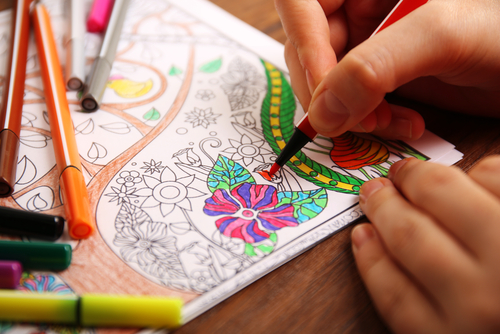Few things, if any at all, in treatment are planned without a copious amount of research behind them. Every didactic lecture, experiential activity, physical exercise, holistic healing, and creative arts therapy is integrated into a treatment program for a very specific reason. Most often, they are for two specific reasons. First, they are proven to reduce the symptoms of addiction, alcoholism, and many of the mental health disorders which are often co-occurring. They relieve stress, enhance relaxation, as well as encourage physical, spiritual, and mental wellbeing. Second, they provide priceless instruction in “relapse prevention”, which is a general term for the collection of tools and skills those in recovery take with them after treatment. Though it can feel like it, treatment doesn’t last forever. One day, the structure and routine are gone. When difficult moments of triggers and cravings arise, it is up to those in recovery to utilize the tools they’ve picked up to get themselves through.
Creative arts therapies are an important practice and skill set in recovery. Treatment programs contain such an array of modalities because not one individual will recover in the same way. No two people experience their alcoholism or mental health disorder in the precisely same fashion. As a result, treatment programs have to be flexible enough to be tailored to the unique needs of each individual. Some people express themselves and work best in an academic setting while others find their best communication through art. Creative art therapies help create a bridge for grasping wide concepts in recovery, learning to communicate with others, finding ways to express emotions, and creating tools for self-care in the future.
According to Mindful, new research from New Zealand has found that “creative acts” in every day life can contribute to a greater sense of wellbeing. “Results showed that people who were engaged in more creative activities than usual on one day reported increased positive emotion and flourishing the next day, while negative emotions didn’t change,” the article explains. Interestingly, the opposite response did not occur. “People who experienced higher positive emotions on day one weren’t more involved in creative activities on day two, suggesting that everyday creativity leads to more well-being rather than the other way around.” Specifically and directly, the researcher behind the project explained that there was no sham around the effect of creativity and well being. “Research often yields complex, murky, or weak findings,” she expressed, “But these patterns were strong and straightforward: Doing creative things today predicts improvements in well-being tomorrow. Full stop.”
Integrative treatment is what we believe to be the solution to the problem of drug addiction and alcoholism. Our programs at Enlightened Solutions bring together a balance of clinical, holistic, spiritual, and twelve step approaches. For more information on our partial care programs, call 844-234-LIVE.





















